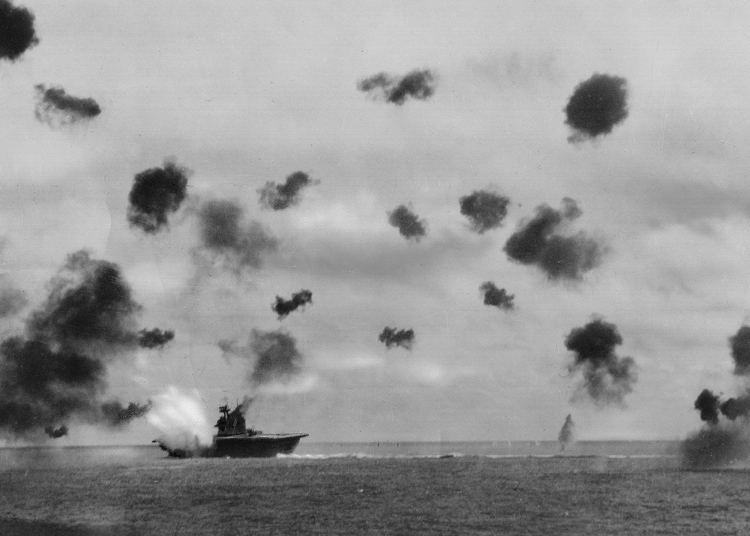The Battle of Midway, fought from June 4-7, 1942, was a critical turning point in World War II. The United States Navy achieved a decisive victory against the Imperial Japanese Navy, halting their advance in the Pacific and shifting the balance of power in favor of the Allies. Following the devastating attack on Pearl Harbor, the Japanese Empire seemed unstoppable as they captured key strategic islands. However, American code-breaking efforts and strategic planning led to a successful counteroffensive at Midway. The resounding American victory not only boosted morale but also demonstrated the capability of the US to defeat the seemingly invincible Japanese Navy.
The Battle of Midway: How American Naval Forces Scored a Decisive Victory Against the Japanese in World War II
The Battle of Midway, which took place from June 4-7 in 1942, was a pivotal moment in World War II. It was a significant turning point in the Pacific Theater, where the United States Navy scored a decisive victory against the Imperial Japanese Navy. This battle not only halted the Japanese advance in the Pacific but also shifted the balance of power in favor of the Allies.
Background
After the attack on Pearl Harbor on December 7, 1941, the Japanese Empire had quickly expanded its reach in the Pacific. The Japanese Navy had decimated the American fleet at Pearl Harbor and proceeded to capture numerous strategic islands in the Pacific, including Wake Island, Guam, and the Philippines. The Japanese advance seemed unstoppable, and it appeared that the Japanese Empire would soon dominate the entire Pacific region.
The Battle
The Battle of Midway began on June 4, 1942, when Japanese forces launched an attack on the American-held atoll of Midway. The Japanese sought to lure the American fleet into a trap and destroy it, thus securing their dominance in the Pacific. However, thanks to a stroke of luck and meticulous code-breaking efforts, the United States Navy was able to anticipate the Japanese attack and prepare a counteroffensive.
During the battle, American aircraft carriers and fighter planes launched a series of devastating airstrikes on the Japanese fleet, sinking four Japanese aircraft carriers and destroying hundreds of Japanese aircraft. The American forces were able to inflict heavy losses on the Japanese Navy, while sustaining minimal damage themselves. The Battle of Midway was a resounding victory for the United States Navy, and it proved to be a turning point in the Pacific Theater of World War II.
Significance
The Battle of Midway was a significant turning point in World War II. It not only halted the Japanese advance in the Pacific but also shifted the balance of power in favor of the Allies. The American victory at Midway proved that the Japanese Navy was not invincible and that the United States had the capability to mount a successful offensive against the Japanese Empire.
Furthermore, the Battle of Midway boosted morale among American forces and the American public, who had been reeling from the devastating attack on Pearl Harbor. The victory at Midway also gave the Allies a strategic advantage in the Pacific, allowing them to eventually push the Japanese forces back and ultimately secure victory in the Pacific Theater.
Conclusion
The Battle of Midway was a pivotal moment in World War II and a testament to the courage and determination of the American naval forces. The decisive victory at Midway not only halted the Japanese advance but also shifted the balance of power in the Pacific in favor of the Allies. The Battle of Midway will always be remembered as one of the most important battles in World War II and a turning point in the history of warfare.













